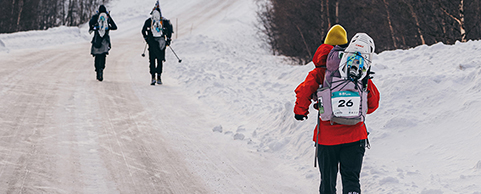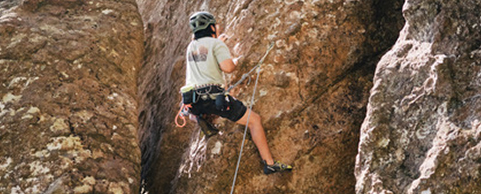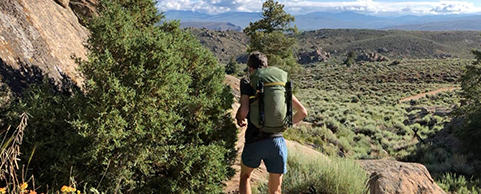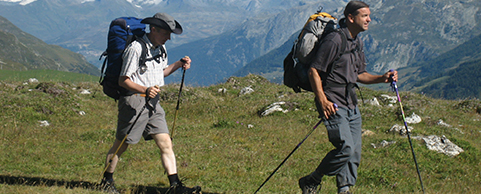How to Choose Bushwalking Boots, Part 2
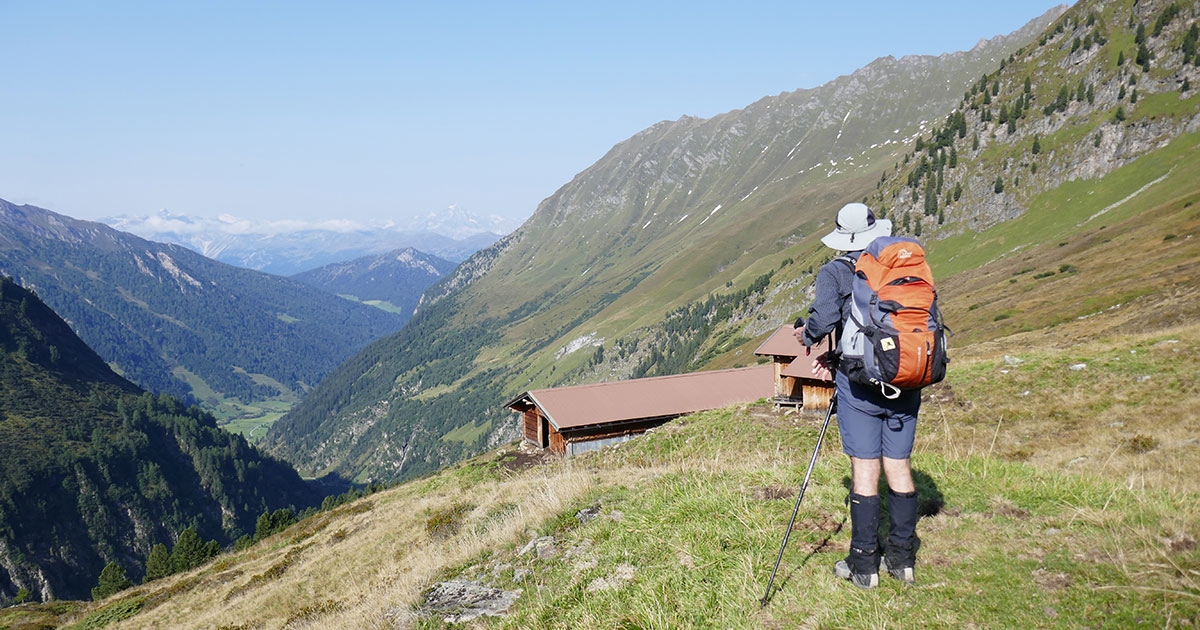
Part 2: Fit
So, hiking boots are next on your list. Maybe you're shopping from home online, or maybe you're thinking of venturing into the store. Either way, you have little idea of how a bushwalking boot is meant to fit. In order to make sure you’ve got a good fit; I’ve detailed the process I would go through when fitting a boot in-store.
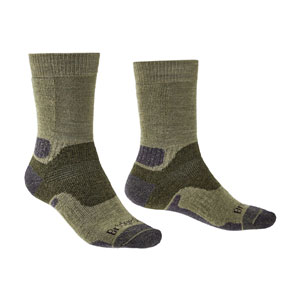 |
|
|
How to Prepare for a Boot Fitting
- Time of day: The best time to fit the boots is at the end of the day. If you’ve been on your feet all day, your feet will likely have slightly swelled. When bushwalking, your feet will also likely swell therefore doing this gives you a more accurate impression of the boots.
- Socks: When fitting the boots, make sure to do so with the same socks you walk in. From my own experience, my thick winter socks make my feet a half European size larger than my three-season socks.
- Insoles: If you use supportive insoles or custom orthotics, it's critical to try the boots with them in instead of the insole that the shoe you're trying on comes with. Also, if you’re waiting for new insoles, I would recommend waiting to receive them before going boot shopping.
How to Fit a Hiking Boot
While fitting your boots, it’s good to constantly reflect on how the boot feels. In order to do so, use the key indicators below. These are the main hallmarks of a well-fitting bushwalking boot.
- Boot fits snugly everywhere except your toes.
- There is enough room in front of your toes when doing normal and dynamic movements.
- Your heel doesn’t slip up and down when walking.
- The boot wraps comfortably around the ankle.
Hopefully if you follow these guidelines you won’t need to refer to our article Blister Prevention – 6 Tips for Happy Feet.
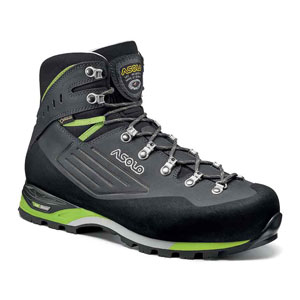 |
|
|
Key Steps
- Before putting on your boots, take out the stock insoles and stand on them. This will give you an idea of how much space you have in front of your toes and might even give you an idea of the width.
- Put your insoles back in and put on the boot. Make sure your heel is up against the back of the boot before you lace them up.
- When lacing the boot, start from the toe up and make sure all the laces are fastened snugly. There are multiple ways to finish your lacing – for fitting try standard techniques or anything else you’re used to.
- With the boot laced up snugly, go for a walk around your home on flat surfaces. When assessing the fit, look out for the key indicators.
- If everything feels good on a flat surface, get creative and do some more dynamic movements to simulate going up/down hill. Going up and down a ramp or stairs is ideal.
- At this point, if you’ve still got all of the key indicators, keep the boots on for a while and walk around the store. If you're at home, keep them on for as long as an hour or two around the house. This may reveal any points of discomfort or hotspots.
Remember after you purchase your boots don’t just slap them on and take off on a multiday bushwalk. This is just asking for trouble. All boots benefit from a wearing-in process. This is more important for heavier, stiffer boots. Take them on a walk around your neighbourhood first for a couple of hours. Then perhaps on a daywalk or two. The boots will give a bit and you can try different sock combos. Your feet will thank you for going to the trouble.
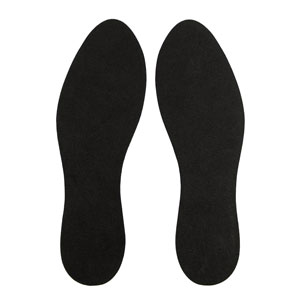 |
|
|
Troubleshooting
If you followed the above steps and still satisfy all of the key indicators, well done! Your preliminary research and hard work have paid off. If you’re almost there, but something doesn’t feel quite right, don’t lose all hope yet. There may be a solution to still achieving a good fit. Below I’ve listed some tools that can solve multiple problems when fitting. These troubleshooting methods shouldn’t be used in lieu of first getting the right size. Rather these tools can be used to go from a pretty good fit to a great fit.
- Volume reducers: Anatom’s volume reducers are rubber shims that essentially beef up your feet and remove excess space in the boot. Reducers are ideal for people with low-volume feet (in layman terms, that's feet that are vertically quite flat to the ground). For people with low-volume feet, using a shim can help you get a more secure fit, which can prevent your heel from lifting and your toes from colliding into the front end of the boot.
- Specialised lacing: Specialised lacing is one way to solve multiple problems. There are myriad different ways to lace up your boots, but my personal favourite is the heel lock method. To learn this, just google ‘hiking boot heel lock lacing’. There are a bunch of instructional videos out there. In most cases, I’ve found this lacing method gives a really secure fit. By locking your heel into place, this method helps reduce heel slip, toe sliding and even discomfort around the ankle. When done correctly, this method pulls from four points rather than two with a traditional lacing knot. By doing this, the boot wraps more snugly around the ankle without feeling necessarily as tight.
The heel lock is a great technique, but definitely not the only one. I recommend trying different lacing methods to see what works for you and what helps you achieve a better fit. - Well-fitting socks: On one particular occasion, I tried everything with a customer: different boots in different sizes, volume reducers and different lacing techniques. We still found that there was a bit of movement in the boot. Throughout the process I did notice that the customer’s chosen socks had been well loved and were no longer very form-fitting. We tried on the front-running boot with a pair of Bridgedale Hike Midweight Socks and a true Cinderella moment was had.
Conclusion
If you’ve never had bushwalking boots before, it’s hard to know how they’re supposed to feel. For instance, I’ll often hear customers say, “I think it fits like it’s supposed to.” This comment is essentially moot if the customer and I have a different idea on what makes a good fit. This is why having key indicators helps you to understand how the boots should fit. Another potential issue is the type of footwear you’re used to. If you only wear tight dress-shoes, a well-fitting bushwalking boot might feel like wearing a tissue box if you don’t know what to look for.
There is nothing worse than spending an entire trip going over thoughts like “Are my boots too small? Did they feel like this when I first got them?” Hopefully, by having some more tips and tricks, you can feel better informed and more confident when fitting your boots.

Mitchell Younes,
Bogong Equipment
See our range of hiking boots.
Questions? Visit us, email us or call us (03 9600 0599).
More Articles
- HOW TO CHOOSE BUSHWALKING BOOTS, PART 1
- LIGHTWEIGHT BUSHWALKING: HOW TO
- SLEEPING BAGS: HOW TO CHOOSE
- MORE RESOURCES...













